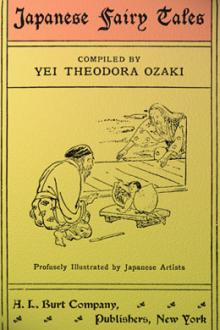Indian Fairy Tales Joseph Jacobs (books to read to improve english .txt) 📖

- Author: Joseph Jacobs
Book online «Indian Fairy Tales Joseph Jacobs (books to read to improve english .txt) 📖». Author Joseph Jacobs
By Joseph Jacobs.
This ebook is the product of many hours of hard work by volunteers for Standard Ebooks, and builds on the hard work of other literature lovers made possible by the public domain.
This particular ebook is based on a transcription produced for Project Gutenberg and on digital scans available at the Internet Archive.
The writing and artwork within are believed to be in the U.S. public domain, and Standard Ebooks releases this ebook edition under the terms in the CC0 1.0 Universal Public Domain Dedication. For full license information, see the Uncopyright at the end of this ebook.
Standard Ebooks is a volunteer-driven project that produces ebook editions of public domain literature using modern typography, technology, and editorial standards, and distributes them free of cost. You can download this and other ebooks carefully produced for true book lovers at standardebooks.org.
To
my dear little Phil
From the extreme West of the Indo-European world, we go this year to the extreme East. From the soft rain and green turf of Gaeldom, we seek the garish sun and arid soil of the Hindu. In the Land of Ire, the belief in fairies, gnomes, ogres and monsters is all but dead; in the Land of Ind it still flourishes in all the vigour of animism.
Soils and national characters differ; but fairy tales are the same in plot and incidents, if not in treatment. The majority of the tales in this volume have been known in the West in some form or other, and the problem arises how to account for their simultaneous existence in farthest West and East. Some—as Benfey in Germany, M. Cosquin in France, and Mr. Clouston in England—have declared that India is the Home of the Fairy Tale, and that all European fairy tales have been brought from thence by Crusaders, by Mongol missionaries, by Gipsies, by Jews, by traders, by travellers. The question is still before the courts, and one can only deal with it as an advocate. So far as my instructions go, I should be prepared, within certain limits, to hold a brief for India. So far as the children of Europe have their fairy stories in common, these—and they form more than a third of the whole—are derived from India. In particular, the majority of the Drolls or comic tales and jingles can be traced, without much difficulty, back to the Indian peninsula.
Certainly there is abundant evidence of the early transmission by literary means of a considerable number of drolls and folktales from India about the time of the Crusaders. The collections known in Europe by the titles of The Fables of Bidpai, The Seven Wise Masters, Gesta Romanorum, and Barlaam and Josaphat, were extremely popular during the Middle Ages, and their contents passed on the one hand into the Exempla of the monkish preachers, and on the other into the Novelle of Italy, thence, after many days, to contribute their quota to the Elizabethan Drama. Perhaps nearly one-tenth of the main incidents of European folktales can be traced to this source.
There are even indications of an earlier literary contact between Europe and India, in the case of one branch of the folktale, the Fable or Beast Droll. In a somewhat elaborate discussion1 I have come to the conclusion that a goodly number of the fables that pass under the name of the Samian slave, Aesop, were derived from India, probably from the same source whence the same tales were utilised in the Jatakas, or Birth-stories of Buddha. These Jatakas contain a large quantity of genuine early Indian folktales, and form the earliest collection of folktales in the world, a sort of Indian Grimm, collected more than two thousand years before the good German brothers went on their quest among the folk with such delightful results. For this reason I have included





Comments (0)